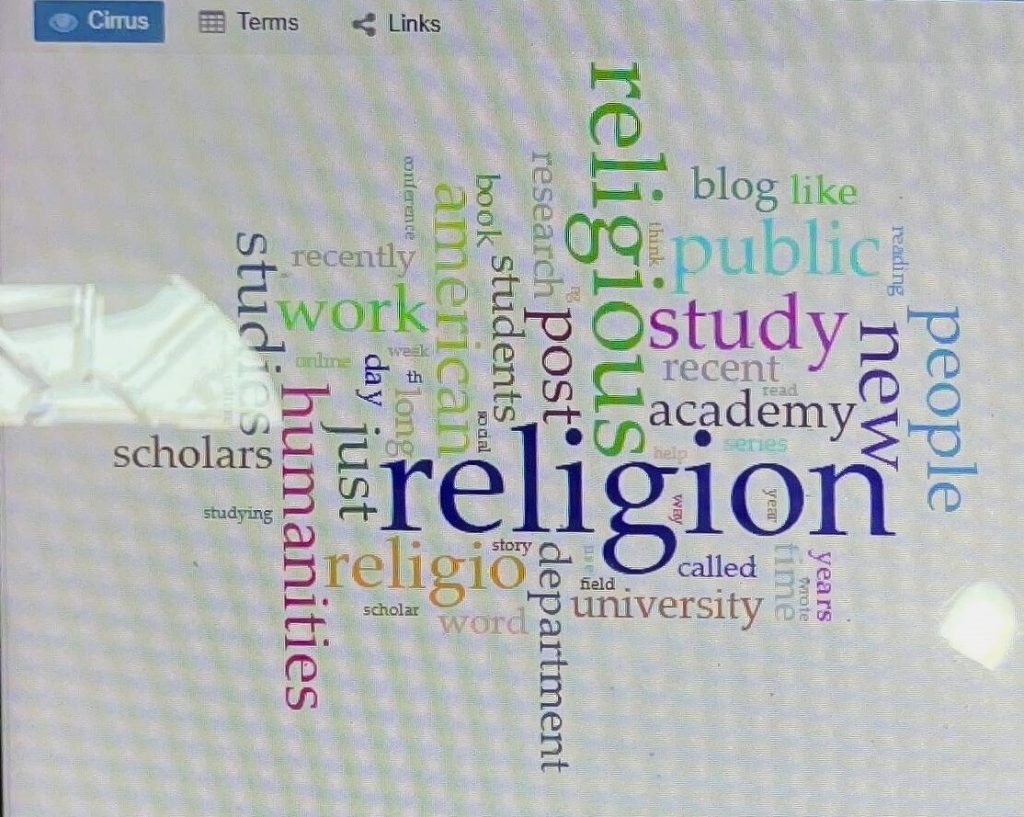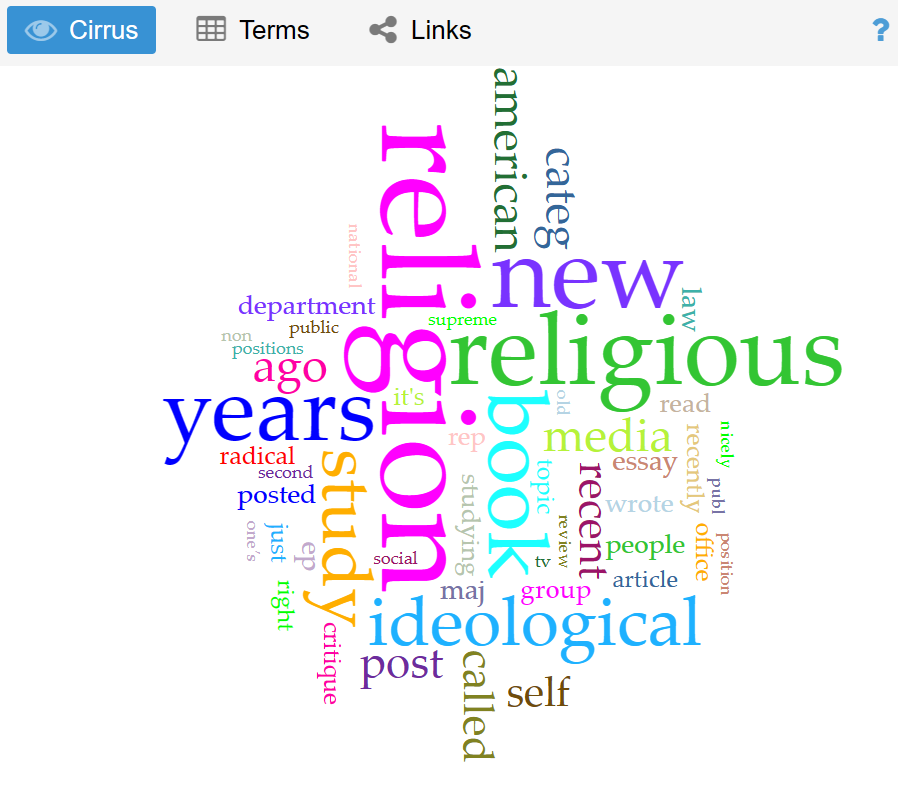
By Trevor Linn, graduate student.
The REL department blog has had many uses over its lifetime (e.g. recording events, introducing people, and sharing commentaries on world events). However, when an outsider has the opportunity to look back on it retrospectively, they can see the extra work the posts are doing beyond what the words say with close reading by using distant reading methods. By “close reading,” I mean what you’re doing right now. “Distant reading,” in contrast, is performed using natural language processing tools.
One of our projects in REL502 this fall was to create a copy of the ENTIRE department blog, export its contents elsewhere, and then rework the blog’s contents for the purposes of distant reading. Close reading plays an important role in this work. Each of us in the class worked through the 1500+ individual posts. I have gone through and categorized, checked links, and retagged posts “from “2014.” I then used Voyant Tools, a text analysis website, to perform some basic distant reading and text analysis. I observed that many of the posts tell a story about the use of the blog, the department, and the vision of what it would become nine years later.
A close reading of the 2014 blog really accentuates the blog’s historical uses. The department started a series called “Backstories,” in which each post interviews a different professor from that year. Questions include where they grew up, how they got introduced to Religious Studies, what interested them in their research area, their current work, committees they serve on, and what they like to do in their free time. Along with the Backstory posts, I also came across a post from the Religious Studies Student Association (RSSA) about the restarting of the Manly Cup (currently called the Presidents Cup) and the history of how the event began as a competition between RSSA and Theta Alpha Kappa Religion Honors Society to the current students vs. faculty competition. Another post focused on changes that had occurred around the department, like the addition of the current building sign listing the departments in Presidents Hall — along with the mysterious removal of a memorial plaque demarcating the University President’s 1st-floor office in Presidents Hall prior to the building of the mansion. Based on these close readings, I could see how the Blog became a place to record the history of people, places, and events that the department saw as important beyond the reading and writing of the classroom. The blog became an extension of the REL Lounge. It created space for conversation about ideas, the classes that students were in, and was a hub for announcements. It was the introduction to the personality of “Religious Studies at UA.”
I wanted to test my close reading notions from above with a distant reading hypothesis. My distant analysis of the 2014 posts helped me pick up on the historical moments captured by the REL blog. However, it made me think about what trends my close reading may be missing. Using Voyant Tools, an online text analysis platform, I was able to convert the 2014 posts and the ENTIRE set of all REL blog posts. The outcomes were surprising and interesting. (Look out for a post from Lauren Thompson about data cleaning and corpus preparation to see how we were able to extract “2014” from other REL blog content! And, Prof. Loewen will have a special feature that will make the corpora available to you, too!)
The Cirrus tool shows a word cloud with the twenty-five most used words. Cirrus then organizes the words by making the most popular of the twenty-five the largest and most central in the frame. The word cloud from the “entire” corpus highlighted words like religion, study, American, school, and public. The “2014” word cloud emphasized religion, books, new, essays, review, and write. From my distant reading through Voyant, I was able to see two different emphases between the corpora. The “Entire” blog data showed the theme that the blog talks about religion through a specific American, academic, and scholarly perspective with a focus on education, students, and teaching. The 2014 data, on the other hand, shows that those posts talked a lot about books, reading, writing, and review giving the impression that the scholarly work of reading and writing was what was especially prevalent in the posts. When comparing them together, along with my close reading of posts that have been posted more recently, I can see that in 2014 the blogs were talking much more about the physical work that comes with studying religion, reading, and writing. The full blog has grown from the physical work of scholars studying religion to the approach to how the department talks about religion—in this case from an American public academic educational stance.


Looking back at the “2014” blog with both the close and distant reading perspectives, I can see “2014” as a turning point within the “entire” corpus. It indexed who the department was and the events that we still identify with it—education, readers, writers, and those with an American academic background. It also showed what was going on in the department, in both our faculty’s thinking and physical work and the student’s experience in the department. My conclusion is that while the department’s blog content began appearing in 2012, the “REL Blog” was born in 2014.